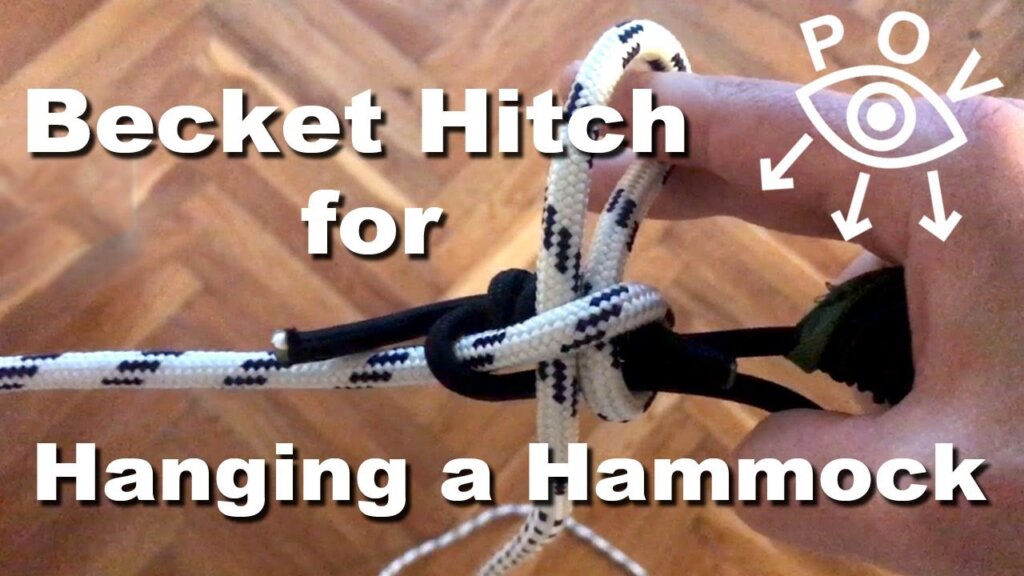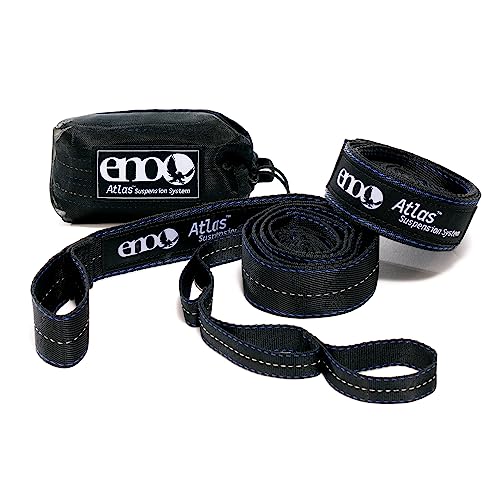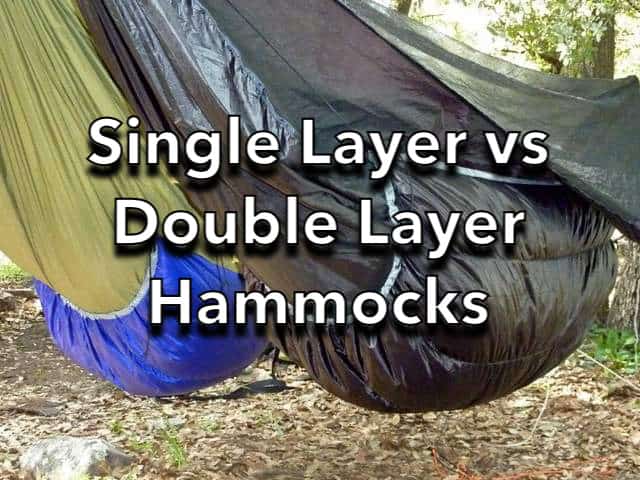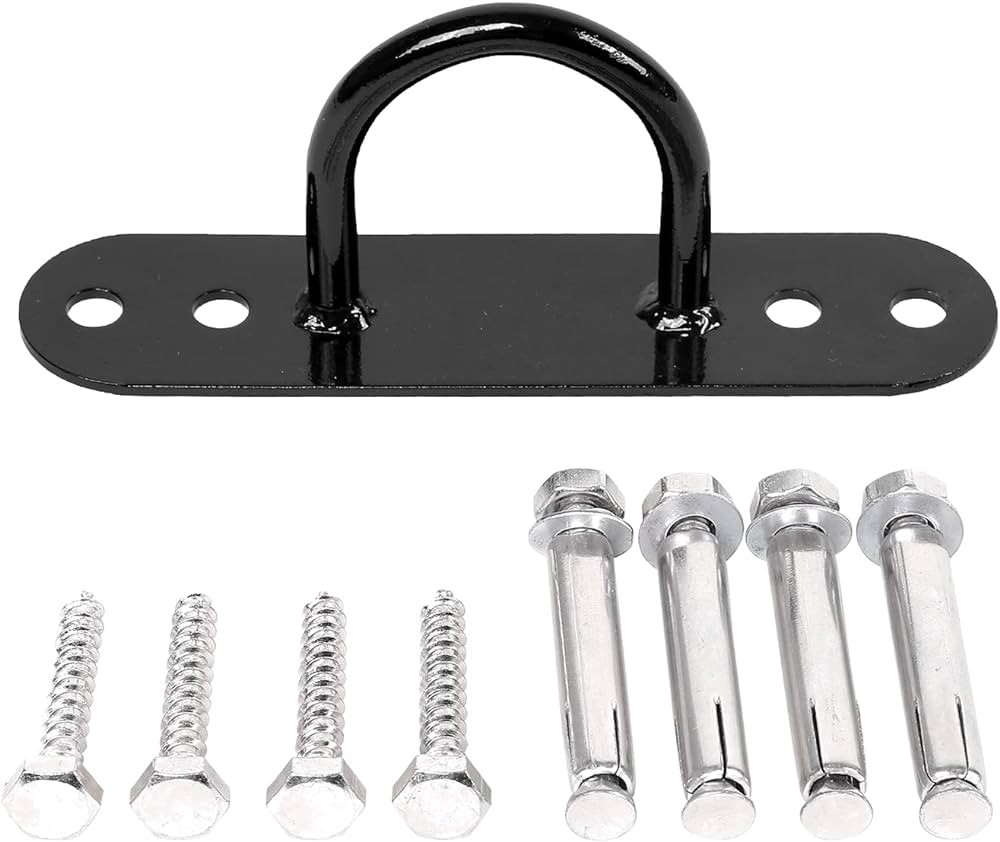- 8 Airplane Footrest Hammock!Travel comfortably - October 9, 2023
- top 7 Pool Float Water Hammock for a Relaxing Summer - October 9, 2023
- top 5 Space SaverSingle Hammock Stand Maximize Comfort and Space - October 9, 2023
To use the Becket Hitch for hammocks, tie a closed loop at one end of the rope, slide the loop over the hammock suspension system, and tighten it by pulling both ends of the rope. This hitch is useful for attaching hammocks to a closed eye or hook.
When it comes to setting up a hammock, the Becket Hitch is a popular choice for securing the hammock to the suspension system. This knot has the same structure as the sheet bend, but instead of joining two ropes together, it fixes a rope to a closed eye or hook.
Whether you’re using rope or webbing, and whether you’re attaching it to the anchor side or hammock side, the Becket Hitch provides a secure and adjustable connection for your hammock. We will explore how to tie the Becket Hitch and provide some helpful tips for using it effectively.
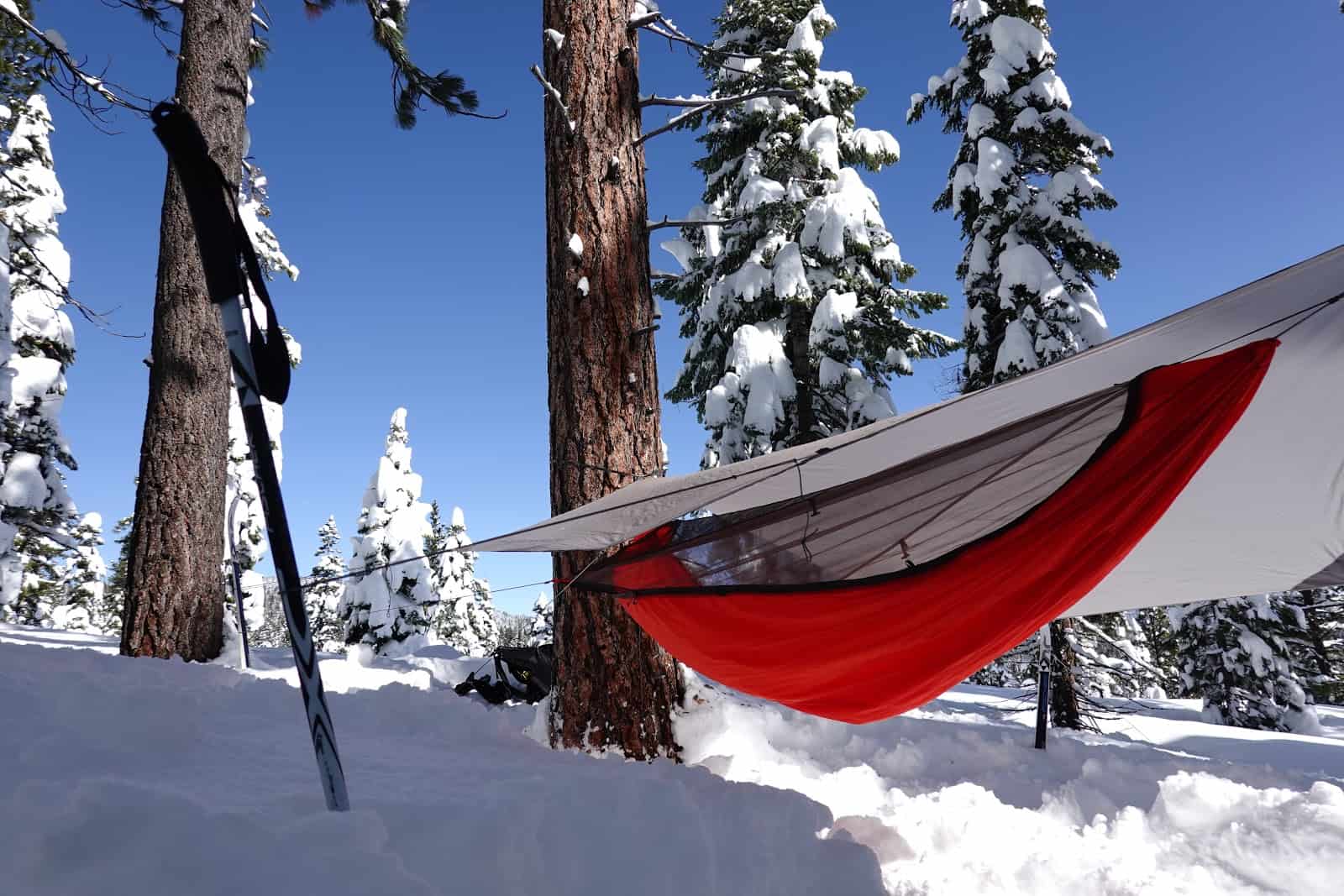
Credit: backpackinglight.com
Understanding The Becket Hitch
What Is The Becket Hitch And Its Purpose?
The Becket Hitch is a knot commonly used in hammock camping and outdoor activities. It has a simple yet effective structure that allows it to fix a rope securely to a closed eye or hook. The purpose of the Becket Hitch is to provide a reliable and adjustable suspension system for hammocks, ensuring a comfortable and secure sleeping or lounging experience. Similar to the popular Sheet Bend knot, the Becket Hitch allows you to join two ropes together, but it is specifically designed to be used with hammocks.
Exploring The Structure Of The Becket Hitch
The structure of the Becket Hitch is quite straightforward. It consists of a loop formed with one end of the rope passing through a closed eye or hook, commonly found on the end of a hammock. This loop is then secured by passing the other end of the rope through the loop and pulling it tight. The simplicity of the Becket Hitch makes it easy to tie and adjust, making it a popular choice among hammock campers.
Key Differences Between The Becket Hitch And The Sheet Bend
While the Becket Hitch and the Sheet Bend have similar structures and purposes, there are a few key differences between them. The Becket Hitch is specifically designed for hammocks, while the Sheet Bend is a more general-purpose bend used to join two ropes of different diameters or rigidity. Additionally, the Becket Hitch allows for adjustable tension, making it easier to achieve the desired level of comfort and support in a hammock setup. In contrast, the Sheet Bend does not offer the same level of adjustability and is typically used for permanent or semi-permanent connections.
Steps For Tying The Becket Hitch
Gathering The Necessary Materials For Tying The Becket Hitch
Before you start tying the Becket Hitch for your hammock, it’s important to gather all the necessary materials. Here’s what you’ll need:
- Hammock
- Rope or webbing
- Anchoring points (such as trees or hooks)
Step-by-step Instructions For Tying The Becket Hitch
Follow these simple steps to tie the Becket Hitch for your hammock:
- Start by creating a loop with your rope or webbing and pass the working end through the loop.
- Take the working end and pass it around the anchoring point, such as a tree or hook, from the back side.
- Bring the working end back through the loop created in step 1.
- Tighten the hitch by pulling both the standing end and working end. Make sure the hitch is secure.
- Repeat the process on the other side of the hammock, ensuring equal tension on both sides.
That’s it! You have successfully tied the Becket Hitch for your hammock. Now you can enjoy a secure and comfortable hang.
Tips And Tricks For Ensuring A Secure Becket Hitch
To ensure a secure Becket Hitch, keep the following tips in mind:
- Choose a strong and reliable rope or webbing that can support your weight and withstand outdoor conditions.
- Make sure the anchoring points are sturdy and can hold the weight of the hammock and the person.
- Double-check the tightness of the hitch before getting into the hammock to avoid any accidents or discomfort.
- If possible, practice tying the Becket Hitch before your actual camping trip or outdoor adventure to familiarize yourself with the process.
By following these tips and tricks, you can ensure a safe and enjoyable hammocking experience with the Becket Hitch.
Advantages And Applications Of The Becket Hitch
When it comes to hanging a hammock, the type of hitch you use is crucial for stability and safety. One popular hitch option is the Becket Hitch, a versatile knot with numerous advantages and applications. In this section, we will discuss the benefits of using the Becket Hitch for hammocks, explore other practical uses of this hitch, and compare it to alternative hitching methods.
Discussing The Benefits Of Using The Becket Hitch For Hammocks
The Becket Hitch offers several advantages when it comes to suspending a hammock. Here are some key benefits:
- Easy to Tie and Untie: The Becket Hitch is relatively simple to tie, making it accessible for hammock enthusiasts of all skill levels. Additionally, it can be easily released, allowing for quick adjustment or dismantling of the hammock setup.
- Secure and Reliable: This hitch provides a secure attachment between the hammock and the anchor point, ensuring stability while you relax or sleep. The Becket Hitch grips tightly, minimizing the risk of any slippage or accidents.
- Adjustability: One of the major advantages of the Becket Hitch is its adjustability. It allows you to easily modify the length of the suspension system, allowing for customized comfort and a perfect hang.
- Minimal Hardware: With the Becket Hitch, you can enjoy a simplified setup without the need for extensive hardware or complex systems. It is a cost-effective solution that requires minimal equipment.
Exploring Other Practical Uses Of The Becket Hitch
While the Becket Hitch is commonly associated with hammock suspension, its practical applications extend beyond just hanging hammocks. Here are some other useful ways you can utilize the Becket Hitch:
- Boating and Sailing: The Becket Hitch can be used for securing lines and ropes on boats and sailboats. It provides a reliable knot that can withstand the forces of water and wind.
- Camping and Backpacking: Along with its primary use for hammock suspension, the Becket Hitch can also be employed for various camping and backpacking tasks. It can be used for setting up tarp shelters, securing gear, or creating makeshift clotheslines.
- Outdoor Recreation: Whether you are rock climbing, fishing, or engaging in other outdoor activities, the Becket Hitch can be a handy knot to have in your repertoire. Its versatility and strength make it suitable for a wide range of applications.
Comparing The Becket Hitch To Alternative Hitching Methods
While the Becket Hitch offers numerous advantages, it’s important to consider alternative hitching methods to make an informed decision based on your specific needs. Here is a brief comparison of the Becket Hitch to other common hitching methods:
| Hitching Method | Advantages |
|---|---|
| Slip Knot | – Quick and easy to tie – Can be easily adjusted – Requires less rope |
| Prusik Knot | – Provides a strong and secure grip – Ideal for creating adjustable loops – Versatile for various applications |
| Lark’s Head Knot | – Simple to tie and untie – Offers a reliable attachment point – Can be used with different materials |
Each hitching method has its own unique advantages and specific use cases. The Becket Hitch, with its ease of use, reliability, and adjustability, remains a popular choice for many hammock enthusiasts.
Troubleshooting And Common Mistakes
While the Becket Hitch is a versatile and reliable method for securing your hammock, it’s important to be aware of common mistakes that can occur during the hitching process. Identifying these errors and knowing how to troubleshoot them will help ensure a successful and safe setup. Here are some key tips and solutions for common issues that may arise:
Identifying Common Errors When Tying The Becket Hitch
When tying the Becket Hitch, it’s important to be aware of common errors that may arise. By understanding these mistakes, you can better troubleshoot and find the right solution. Here are some common errors to watch out for:
- Lack of proper alignment: It’s essential to align the ends of your ropes or webbing correctly to create a secure hitch. Misalignment can lead to a weak and unreliable setup.
- Inadequate tightening: Not properly tightening the hitch can cause slippage and instability. Ensure that the hitch is securely tightened to avoid any mishaps.
- Incorrect wrapping technique: The Becket Hitch requires a specific wrapping technique to ensure proper tension and stability. Using the wrong wrapping technique can lead to a weak hitch.
To avoid these common errors, it’s important to pay attention to detail and carefully follow the steps for tying the Becket Hitch. Take the time to double-check the alignment, tighten the hitch properly, and use the correct wrapping technique.
Providing Solutions For Troubleshooting Issues With The Becket Hitch
If you encounter any issues while tying the Becket Hitch, here are some solutions to commonly faced problems:
| Problem | Solution |
|---|---|
| Hitch slipping | Ensure that the hitch is tightly secured and properly tightened. Consider using a double wrap for added strength. |
| Alignment issues | Carefully align the ends of your ropes or webbing before tying the hitch. This will ensure a secure and stable setup. |
| Difficulty in tightening | If you’re having trouble tightening the hitch, try using a tool such as a stick or carabiner to aid in the process. This will provide better leverage and make tightening easier. |
By implementing these solutions, you can troubleshoot any issues that arise and ensure a successful hitching process with the Becket Hitch.
Key Tips For Avoiding Mistakes And Ensuring A Successful Hitching Process
To ensure a smooth and hassle-free hitching process with the Becket Hitch, here are some key tips to keep in mind:
- Follow the instructions: Carefully read and follow the instructions for tying the Becket Hitch. This will help you avoid any mistakes or errors.
- Practice tying the hitch: Before heading out on your hammock adventure, take the time to practice tying the Becket Hitch. This will help you become more familiar with the process and ensure a quicker and smoother setup.
- Inspect your gear: Before each use, inspect your ropes or webbing to ensure they are in good condition. Replace any worn or damaged gear to maintain the safety and reliability of your setup.
- Ask for assistance if needed: If you’re unsure about the hitching process or encountering any difficulties, don’t hesitate to ask for assistance. Seeking guidance from experienced hammock enthusiasts or professionals can help you troubleshoot any issues.
By following these key tips, you can avoid mistakes and ensure a successful hitching process with the Becket Hitch. Remember, practice makes perfect, so take the time to familiarize yourself with the hitching technique to enjoy a comfortable and secure hammock experience.
Frequently Asked Questions Of How To Use The Becket Hitch For Hammocks
What Is The Purpose Of A Becket Hitch?
The purpose of a Becket hitch is to fix a rope to a closed eye or hook. It has the same structure as the sheet bend but is used to join two ropes together, while the Becket hitch is used to secure a rope.
How Do You Tie A Becket Hitch?
To tie a becket hitch, follow these steps: 1. Take another bite of the rope/webbing and insert it through the original loop. 2. Tighten it down. You can also use a stick or carabiner in the same spot. (Source: The Ultimate Hang)
How To Do A Becket Bend?
To do a becket bend, follow these steps: Take one end of the rope and make a loop. Pass the other end of the rope through the loop and underneath itself. Then, pass the end of the rope through the loop again, creating a secure bend.
Cinch the knot tight. This knot is useful for joining ropes of different diameters or rigidity.
Is A Becket Bend The Same As A Sheet Bend?
The becket bend and the sheet bend are different knots. The sheet bend joins two ropes together, while the becket bend fixes a rope to a closed eye or hook.
Can I Use The Becket Hitch For Any Type Of Hammock?
Yes, the Becket Hitch can be used for any type of hammock, whether it is rope or webbing based.
How Do I Tie A Becket Hitch For My Hammock?
To tie a Becket Hitch for your hammock, simply follow these steps: 1) Take the end of your rope or webbing and make a loop. 2) Pass the end through the loop. 3) Pull tight to secure the hitch.
Conclusion
Using the Becket Hitch for hammocks is a simple yet effective method for securing your hammock. Whether you’re using rope or webbing, and whether it’s on the anchor side or hammock side, the Becket Hitch can be easily tied and adjusted to your desired tension.
It provides a secure connection and ensures a comfortable and enjoyable hammocking experience. So go ahead, give the Becket Hitch a try and enhance your hammock setup today!

